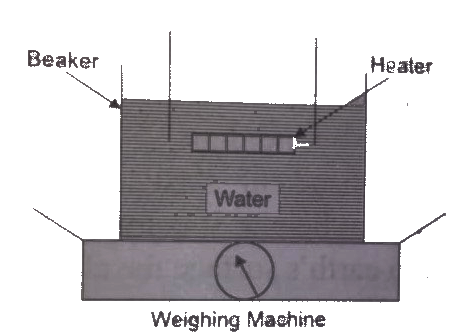Abida and Ramesh want to heat water taken in separate beakers . Abida kept the beaker near the wick in the yellow part of the candle flame. Ramesh kept the beaker in the outermost part of the flame . Whose water will get heated in a shorter time ? Why ?
Ramesh.s water will get heated in a shorter time because the outermost part of the candle flame is the hottes part
Topper's Solved these Questions
Similar Questions
Abida and Ramesh were doing an experiment in which water was to be heated in a beaker. Abida kept the beaker near the wick in the yellow part of the candle flame. Ramesh kept the beaker in the outermost part of the flame. Whose water will get heated in a shorter time?
View SolutionAbida and Ramesh were doing an experiment in which water was to be heated in a beaker. Abida kept the beaker near the wick in the yellow part of the candle flame. Ramesh kept the beaker in the outermost part of the flame. Whose water will get heated in a shorter time?
View Solution
Knowledge Check
- Question 1 - Select One
As part of an experiment to determine the latent heat of vaporisation of water, a student boils some water in a beaker using an electric heater as shown below. The student notes two sources of error.

Error-1: thermal energy is lost from the sides of the beaker
Error -2: As the water is boling water splashes out of the beaker
Which of the following gives the correct effect of these two errors on the calculated value for the specific lalent heat?AError-1 = increases , Error-2 = DecreaseBError-1 = increases , Error-2 = increaseCError-1 = Decreases , Error-2 = increaseDError-1 = Decreases , Error-2 = Decrease - Question 2 - Select One
A beaker contains hot water we will notice that after some time rate of heat decreases. Why is it so happens?
ADue to the latent heat of waterBDue to specific heat of waterCBecause beaker is made up of glass and it is bad conductor due to heat.DTemperature difference - Question 3 - Select One
A student takes some water in a beaker and heats it over a flame for determining its boiling point. He keeps on taking its temperature reading. He would observe that the temperature of water :
Akeeps on increasing regularlyBkeeps on increasing ireegularlyCfirst increases slowly, then decreases rapidly and eventually becomes constantDfirst increases gradually and then becomes constant
Jyoti and Sanjay were doing an experiment in which water was to be heated in a beaker. Jyoti kept the beaker near the wick in the yellow part of the candle flame. Sanjay kept the beaker in the outermost part of the flame. Which water will get heated in a shorter time?
View SolutionThe water heated by Ramesh will get heated in a shorter time because he kept his beaker near the hottest zone of the flame. Comment.
View SolutionName the process by which
water in a beaker gets heated by the burner kept below it.View SolutionPaheli kept some water in a beaker for heating. She observed that tiny bubbles appeared before the water started to boil. She boiled the water for about 5 minutes and filled it in a bottle up to the brim and kept the bottle air tight till it cooled down to room temperature
(a) Why did the tiny bubbles appeared ?
(b) Do you think tiny bubbles will appear on heating the water taken out from the bottle? Justify your answer.View SolutionApparatus: Metal spatula, burner, carbon electrodes, beaker, cell, lamp, press key, electrical wires, etc.
Chemicals: Samples of sodium chloride, potassium iodide and barium chloride, water.
Procedure: Observe the above samples. Place sample of one of the above salts on the spatula and heat it on the flame of the burner. Repeat the procedure using the other salts. As shown in the figure, assemble an electrolytic cell.

Assemble an electrolytic cell by using a beaker and connecting the carbon electrodes to the positive and negative terminal of the cell. Dip the electrodes in solution of any one of the salts. Do you see the lamp glowing? Check this with all the other salts as well.View Solution

